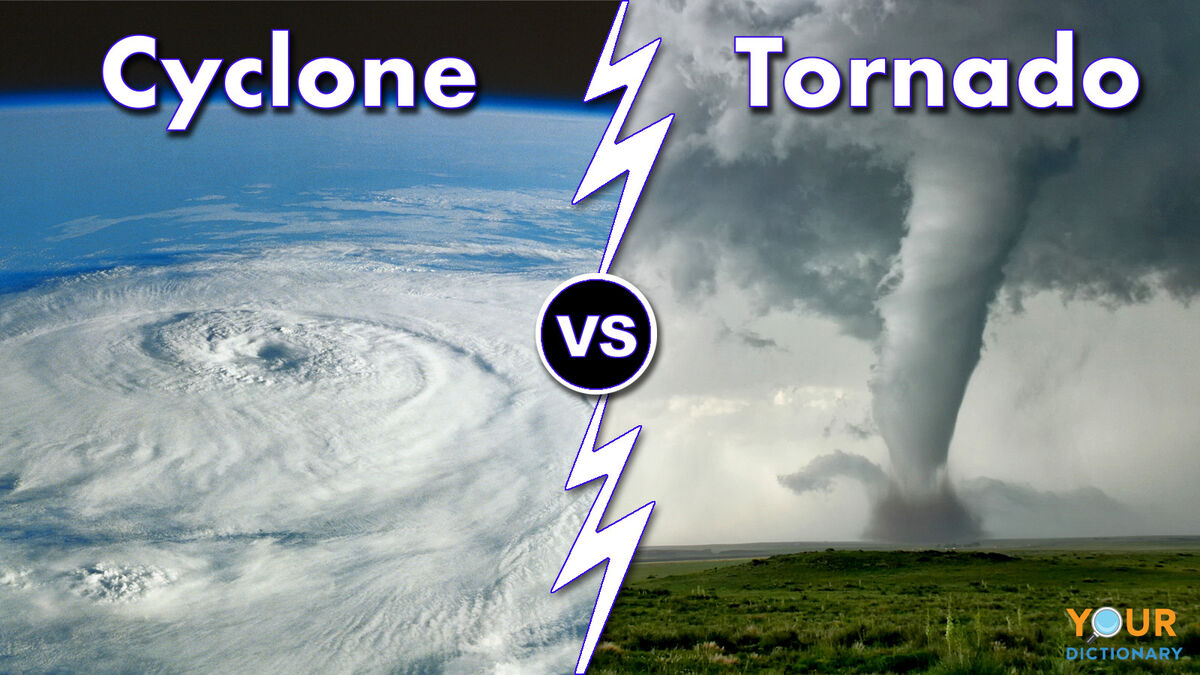What is the Difference Between a Tornado and a Cyclone?
When it comes to severe weather phenomena, tornadoes and cyclones are often mentioned in the same breath. Both are powerful storms that can cause significant damage, but what exactly differentiates a tornado from a cyclone? In this article, we will explore the key distinctions between these two types of storms and delve into their unique characteristics.
Tornadoes: Twisting Vortexes of Destruction
**A tornado is a violent, rotating column of air that is in contact with both the surface of the Earth and a cumulonimbus cloud.** These storms are notorious for their destructive power and can cause catastrophic damage within a matter of minutes.
**Formation and Appearance**
Tornadoes typically form from severe thunderstorms, which are characterized by strong updrafts and downdrafts. The rapid changes in wind speed and direction associated with these storms create a horizontal rotation in the lower atmosphere. When this rotation is tilted vertically by powerful updrafts, a tornado is born.
Tornadoes come in various shapes and sizes, but they are commonly characterized by a condensation funnel. This funnel-shaped cloud descends from the base of the parent thunderstorm and can stretch all the way to the ground. Tornadoes may also exhibit a rotating wall cloud, a region of intense low-level rotation that often precedes the formation of a tornado.
**Intensity and Damage**
Tornadoes are classified on the Enhanced Fujita (EF) scale, which rates their intensity based on the damage they cause. The scale ranges from EF0 (weakest) to EF5 (strongest), taking into account the estimated wind speeds and the types of structures affected. Weaker tornadoes may cause minimal damage, while the strongest tornadoes can level well-built houses and even strip vegetation from the ground.
Tornadoes are known for their ability to generate strong winds, flying debris, and intense lightning. These hazards can pose a significant threat to life and property, making it essential to seek shelter in a sturdy building or underground when a tornado warning is issued.
Cyclones: Spiraling Monsoons of Power
Unlike tornadoes, cyclones are not synonymous with destructive storms. In fact, the term “cyclone” simply refers to any rotating storm system characterized by a closed low-pressure center. **Cyclone is the term used in the Indian Ocean and South Pacific, while the term “hurricane” is used in the Atlantic and Northeast Pacific, and “typhoon” is used in the Northwest Pacific.**
**Formation and Structure**
Cyclones derive their energy from warm ocean waters, typically forming in tropical or subtropical regions. These storms require specific conditions, including warm sea surface temperatures, moisture, and a pre-existing disturbance, to develop and strengthen.
A cyclone consists of a well-defined eye at the center, surrounded by eyewalls and rainbands. The eye is a relatively calm area with light winds, while the eyewall contains the most intense winds and strongest convection. Rainbands extend outward from the center and can bring heavy rainfall and gusty winds to surrounding areas.
**Intensity and Damage**
Cyclones are classified based on their maximum sustained wind speeds, using the Saffir-Simpson Hurricane Wind Scale. This scale ranges from Category 1 (weakest) to Category 5 (strongest), correlating wind speeds with potential damage. While cyclones can cause significant damage, their impact is primarily due to storm surge, heavy rainfall, and strong winds, rather than the violent rotation associated with tornadoes.
The most devastating cyclones can produce storm surges, which are abnormal rises of water associated with low-pressure systems. These surges can flood coastal areas and lead to widespread destruction. Heavy rainfall from cyclones can also trigger flooding and landslides, posing additional risks to affected regions.
**Frequently Asked Questions**
Frequently Asked Questions
1. Can a tornado become a cyclone?
No, a tornado cannot become a cyclone. While tornadoes and cyclones both involve rotation, they form under different atmospheric conditions and have distinct characteristics.
2. Which is more destructive, a tornado or a cyclone?
Overall, tornadoes tend to be more destructive on a localized scale, causing intense damage within a narrow path. Cyclones, on the other hand, can cause widespread damage over larger areas due to factors such as storm surge and heavy rainfall.
3. Where do tornadoes and cyclones occur?
Tornadoes can occur in various parts of the world, but they are most commonly observed in tornado alley, a region in the central United States. Cyclones primarily form in tropical or subtropical regions, with different regions using different names for the storms, such as hurricanes or typhoons.
Final Thoughts
In conclusion, while tornadoes and cyclones are both powerful storms, they have distinct characteristics and formation processes. Tornadoes are violent, rotating columns of air that form within severe thunderstorms, whereas cyclones are rotating storm systems that develop in warm ocean waters. While tornadoes are more localized and known for their destructive winds, cyclones are larger-scale weather systems that can cause damage through storm surge, heavy rainfall, and strong winds. Understanding the differences between these two types of storms is crucial for preparedness and staying safe during severe weather events.
